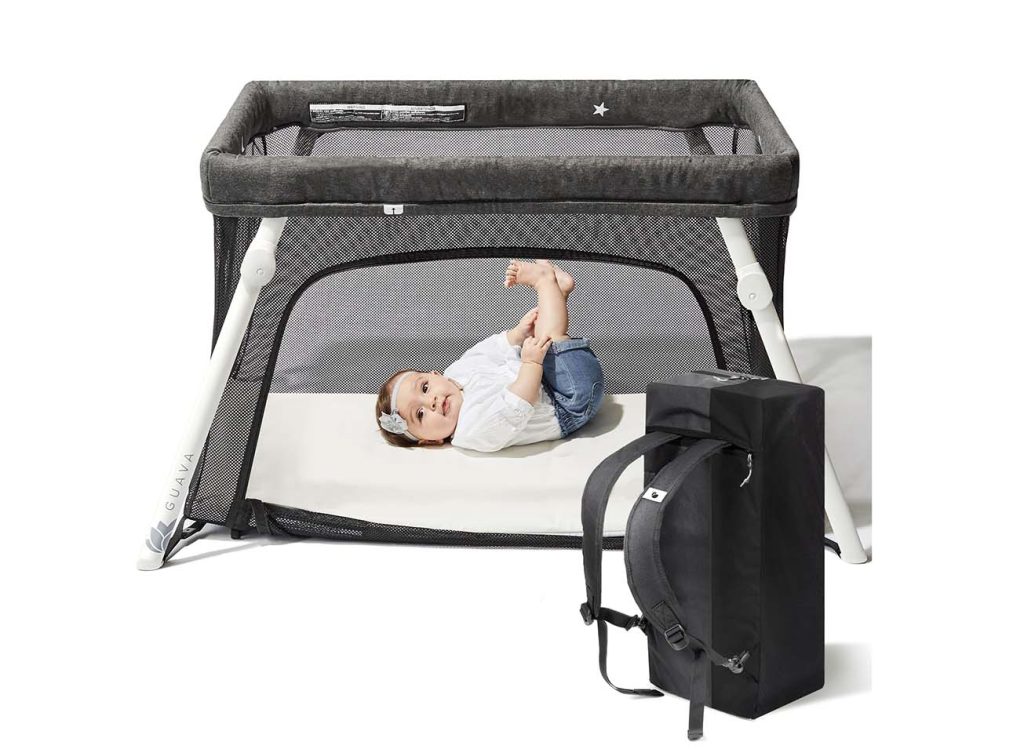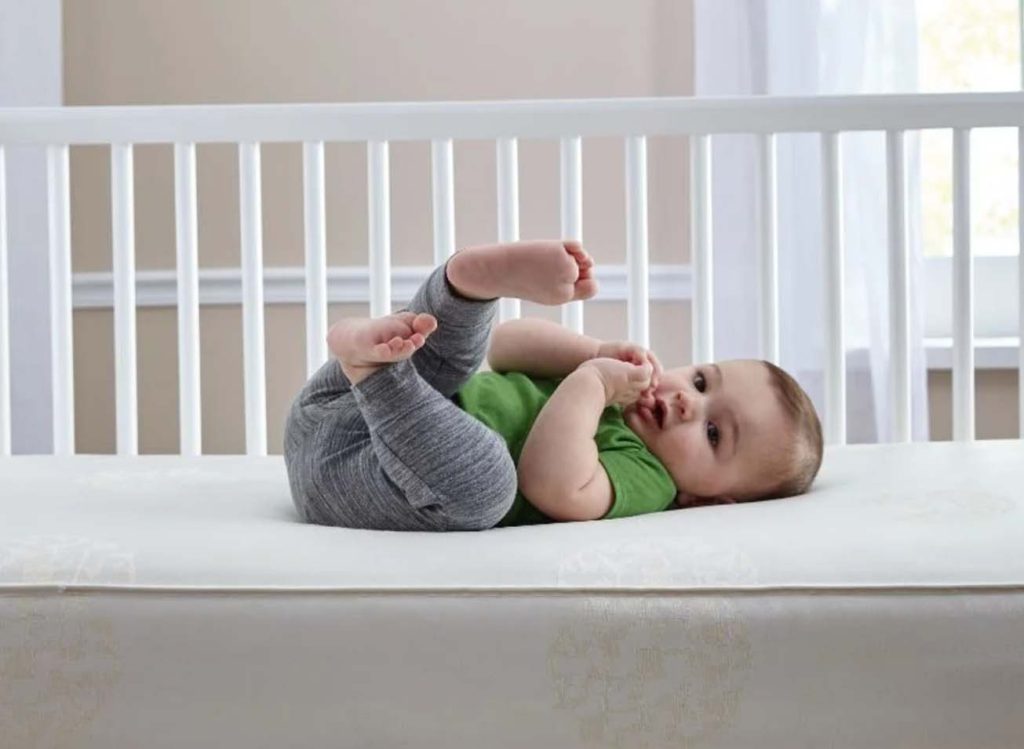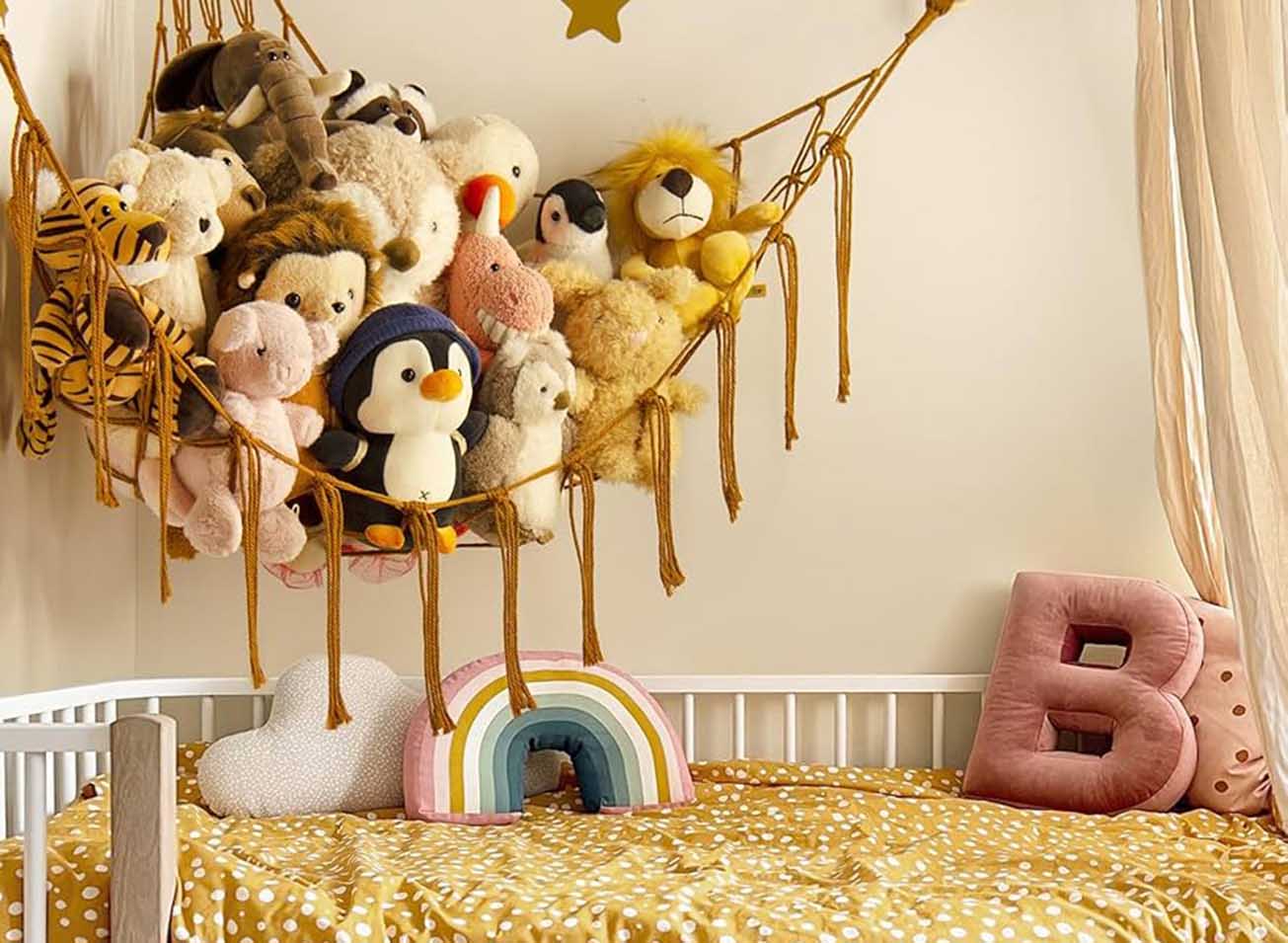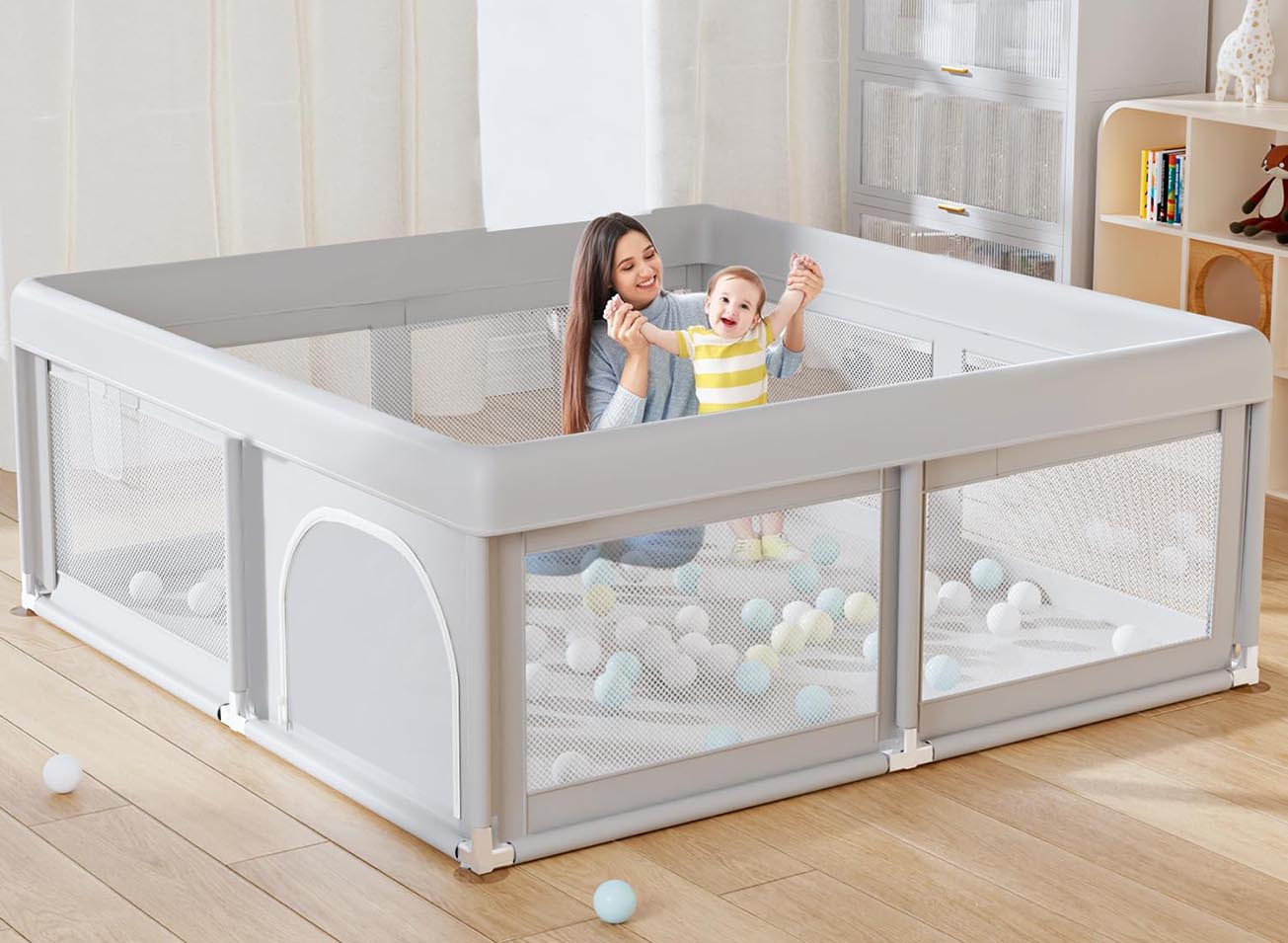Welcoming a newborn is a major joy for any family, and preparing a comfortable and safe sleeping environment for the baby is an essential task for every parent. A baby crib is not only where the baby sleeps every day but also directly impacts the baby’s health and development. Choosing the right crib involves considering various factors such as comfort, safety, material, design, and functionality. We will explore different types of baby cribs, key considerations for selection, well-known brands, and their features, helping you make an informed decision to create a healthy and secure environment for your baby.
Types and Features of Baby Cribs
1. Standard Cribs
Features and Advantages
Standard cribs are the most common type of baby crib. They are usually made of solid wood or metal, with a standard size of 140×70 cm. Their design is simple yet functional, making them suitable for most families. The main advantages of standard cribs include:
- Strong Stability: Standard cribs are generally more stable and durable, able to withstand the baby’s movements and weight.
- Adjustable Mattress Height: Many standard cribs come with adjustable mattress supports, allowing parents to adjust the height according to the baby’s growth stage, making it easier to pick up and place the baby.
- Variety of Designs: There are many different styles and colors of standard cribs available, meeting various family needs.
Disadvantages
Despite their advantages, standard cribs have some drawbacks:
- Large Size: Standard cribs are relatively large and can occupy considerable space, which may not be ideal for families with limited room.
- Poor Mobility: Standard cribs are usually fixed in one place, making it inconvenient to move them when rearranging the room or cleaning.
2. Portable Cribs

Features and Advantages
Portable cribs are designed to be lightweight and foldable, making them suitable for travel or short-term stays. Their design focuses on portability, using aluminum frames and soft fabrics, and they are easy to assemble and disassemble. The advantages of portable cribs include:
- Lightweight and Easy to Carry: Portable cribs are lightweight and can be easily folded and stored, making them ideal for travel and short stays.
- Easy Assembly: Many portable cribs have a simple folding design that allows for quick assembly and disassembly, suitable for families that frequently move.
- High Mobility: Some portable cribs come with wheels, making it easy to move them around the home, increasing flexibility.
Disadvantages
While convenient, portable cribs have some drawbacks:
- Relatively Lower Stability: Due to their emphasis on portability, portable cribs may not be as stable as standard cribs, which can affect safety over time.
- Limited Usage Duration: Portable cribs are generally suitable for newborns and infants, and may need to be replaced as the baby grows.
3. Multi-Functional Cribs
Features and Advantages
Multi-functional cribs combine various features such as a crib, playpen, and changing table. They are designed to provide more convenience and value. The advantages of multi-functional cribs include:
- Versatile Use: Multi-functional cribs can be used as a crib, playpen, changing table, and more, meeting various needs of the baby.
- Space Saving: Their integrated design saves space, making them suitable for small apartments.
- Extended Usage: The various functions of a multi-functional crib allow it to adapt as the baby grows, extending its usability.
Disadvantages
Multi-functional cribs also have some drawbacks:
- Complex Structure: The structure of multi-functional cribs can be complex, requiring more time to assemble and adjust.
- Unused Features: Some features may not be frequently used, leading to potential wastage, especially in larger spaces.
4. Mini Cribs
Features and Advantages
Mini cribs are smaller in size, suitable for families with limited space. Their design focuses on compactness and practicality, providing a comfortable sleeping environment for newborns. The advantages of mini cribs include:
- Ideal for Small Spaces: Mini cribs are compact and occupy less space, making them perfect for small apartments or limited spaces.
- Lightweight and Easy to Move: Mini cribs are usually lighter and easier to move and adjust, convenient for daily use.
- Affordable: Mini cribs are typically more affordable, suitable for families on a budget.
Disadvantages
Mini cribs have some limitations:
- Shorter Usability: Due to their smaller size, mini cribs are suitable for newborns and small infants, and may need to be replaced as the baby grows.
- Limited Functionality: Mini cribs usually have a simple design and lack additional features and accessories, which may not meet all usage needs.
5. Co-Sleeping Cribs
Features and Advantages
Co-sleeping cribs are designed to facilitate breastfeeding and enhance parent-baby bonding. They can be attached to the parents’ bed, allowing the baby and parents to share a sleeping space while maintaining a separate sleep area for the baby. The advantages of co-sleeping cribs include:
- Enhanced Bonding: Co-sleeping cribs allow close contact between the baby and parents, enhancing bonding and making breastfeeding more convenient.
- High Safety: While the baby shares the sleep space with parents, the co-sleeping crib provides a separate sleeping area to prevent the baby from being squashed.
- Adaptability: Many co-sleeping cribs have adjustable heights, accommodating various adult bed heights and increasing flexibility.
Disadvantages
Co-sleeping cribs also have some drawbacks:
- Limited Usability Period: Co-sleeping cribs are generally suitable for the early stages of the baby’s life and may need to be replaced with a standalone crib as the baby grows.
- Potential Impact on Independence: Long-term co-sleeping may affect the baby’s development of independence and future sleep habits.
Key Considerations for Buying a Baby Crib
1. Safety
Material Choice
Safety is the most critical factor when choosing a baby crib. First, ensure that the crib’s materials are non-toxic and free of harmful chemicals. Common safe materials include solid wood and non-toxic paint. Solid wood cribs are usually durable, while non-toxic paint avoids potential health impacts. Avoid materials containing formaldehyde or other harmful chemicals to ensure the baby’s health and safety.
Structural Stability
The crib’s structure should be stable to prevent any wobbling or shaking. The distance between crib slats should be between 4.5-6.5 cm to prevent the baby’s head from getting stuck. The design of the slats should avoid gaps larger than 6.5 cm to reduce the risk of suffocation. Check the connections between the crib board and the slats to ensure there are no loose or potential safety hazards. The crib legs and base should be secure to prevent the crib from tipping or swaying.
Edge Design
The edges and corners of the crib should be rounded and free of sharp edges or splinters to prevent injury during the baby’s movements. Sharp edges could cause cuts or bruises as the baby rolls or crawls. Choose cribs with well-finished, rounded edges to enhance safety.
2. Mattress

Firmness and Comfort
The choice of mattress directly affects the baby’s sleep quality. The mattress should be firm enough to provide good support. A mattress that is too soft can pose a suffocation risk, while a mattress that is too hard may impact comfort. Check the firmness of the mattress by pressing on its surface to ensure it provides adequate support. Additionally, the mattress’s comfort level should be considered to ensure a good night’s sleep for the baby.
Size Matching
The mattress size should fit the crib perfectly to avoid any gaps. Gaps between the mattress and crib can pose a safety risk if the baby gets stuck in the gap. Measure the crib’s internal dimensions and choose a mattress that fits snugly to ensure safety and fit.
Material and Environmental Considerations
Choose breathable and environmentally friendly materials, such as organic cotton or natural latex, to ensure the baby’s health. Organic cotton mattresses are generally free from harmful chemicals and offer good breathability and comfort. Natural latex mattresses provide excellent elasticity and support while being eco-friendly. Choosing environmentally friendly materials not only benefits the baby’s health but also reduces environmental impact.
Washability
The mattress cover should be removable and washable to maintain cleanliness and hygiene. The baby’s skin is sensitive and can be easily irritated by external factors, so keeping the mattress clean is crucial. Opt for mattresses with removable and machine-washable covers for easy cleaning and maintenance. Regularly wash the mattress cover to remove dust and bacteria, keeping the sleep environment clean.
3. Functionality
Adjustable Height
A crib with an adjustable mattress height allows parents to easily pick up the baby and adjust the height as the baby grows. The crib height should be adjustable according to the baby’s age and developmental stage to make it easier for parents to lift and place the baby. Adjustable mattress height also helps reduce back strain for parents by minimizing the need to bend over.
Convertible Features
Some cribs have convertible features, allowing them to transform from a crib to a toddler bed or playpen, making them suitable for long-term use. This design can adapt as the baby grows, extending the crib’s usability. For example, some cribs can be converted from a full crib to a toddler bed or daybed as the baby matures. Convertible cribs offer long-term value by eliminating the need for a new bed purchase.
Additional Accessories
Some cribs come with additional accessories such as storage drawers and changing tables, which enhance convenience. Accessories can provide extra storage space
for baby essentials or a convenient changing area. Choose a crib with accessories that match your needs and preferences to increase functionality and convenience.
4. Design and Style
Aesthetic Appeal
The design and style of the crib should match the nursery’s decor and the parents’ preferences. Consider the nursery’s theme and the crib’s color and design to create a cohesive and pleasing environment. Popular styles include classic, modern, and vintage designs. The crib’s design should complement the overall theme of the nursery and create a welcoming atmosphere.
Space Consideration
Consider the size of the nursery when choosing a crib. Ensure that the crib fits well within the available space and allows for adequate movement and accessibility. Measure the nursery’s dimensions and choose a crib that fits comfortably without overcrowding the room. Allow space for other furniture and items in the nursery, such as a changing table and storage units.
Choosing the best baby crib involves considering various factors such as safety, functionality, design, and brand reputation. By understanding the different types of cribs, their features, and key considerations, you can make an informed decision that best suits your family’s needs. Remember to prioritize safety and comfort, ensuring a secure and cozy sleeping environment for your baby. With the right crib, you can create a nurturing space for your baby to grow and thrive.



